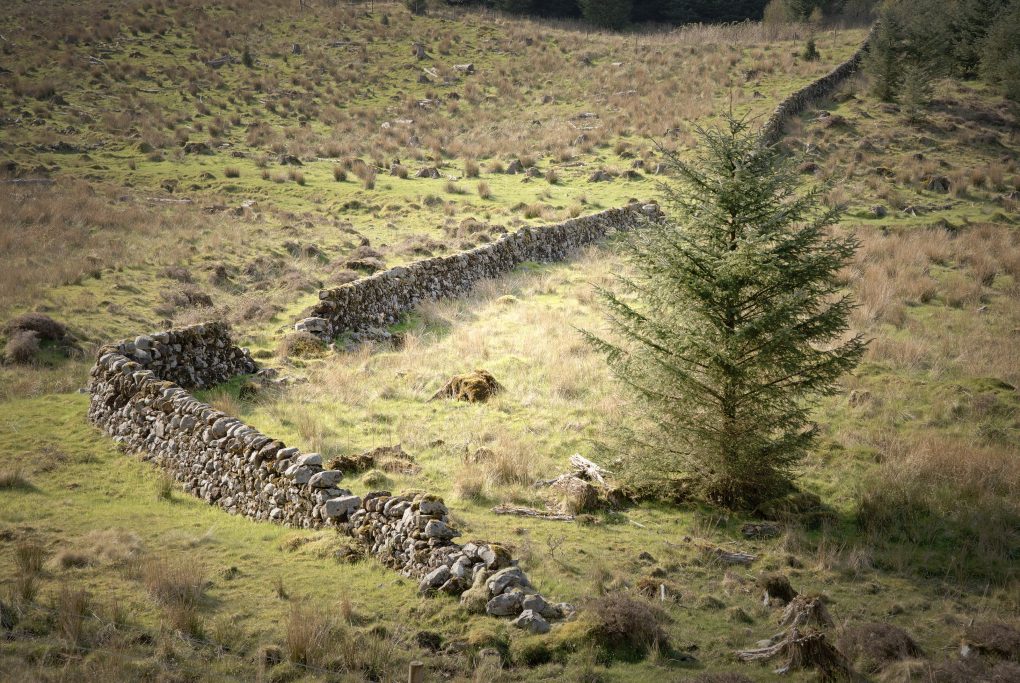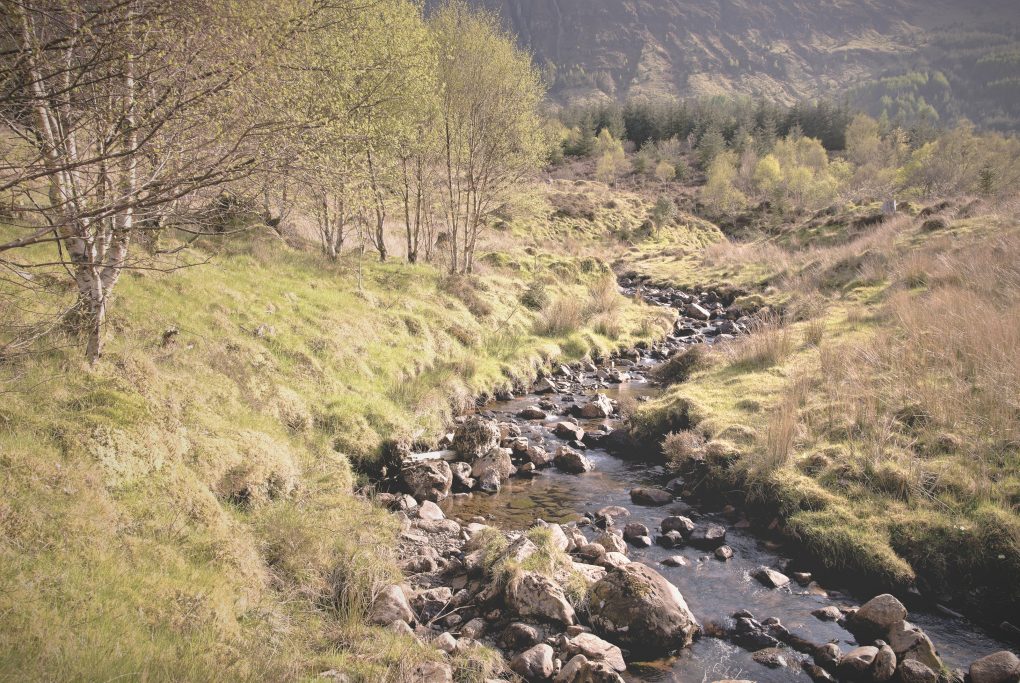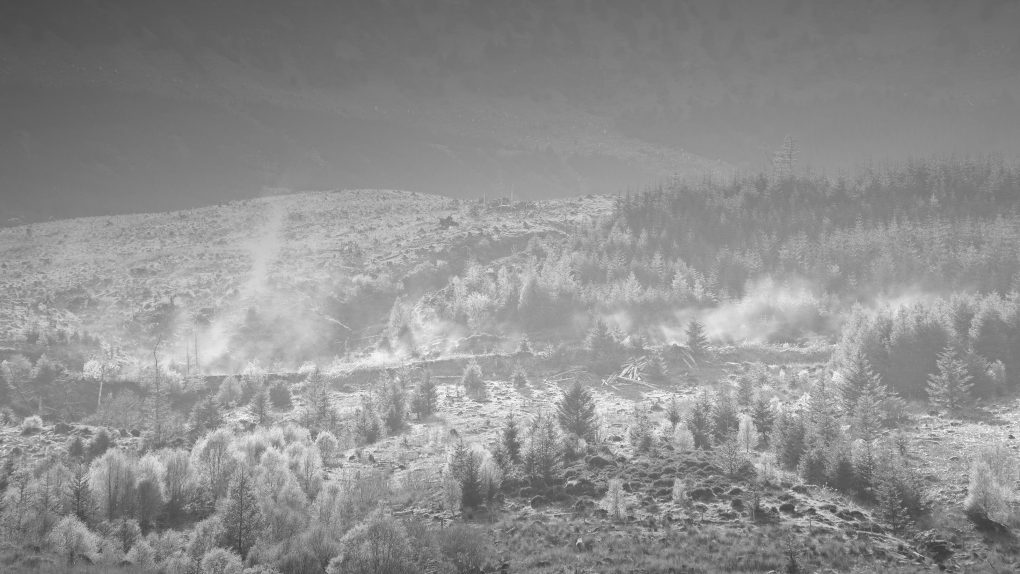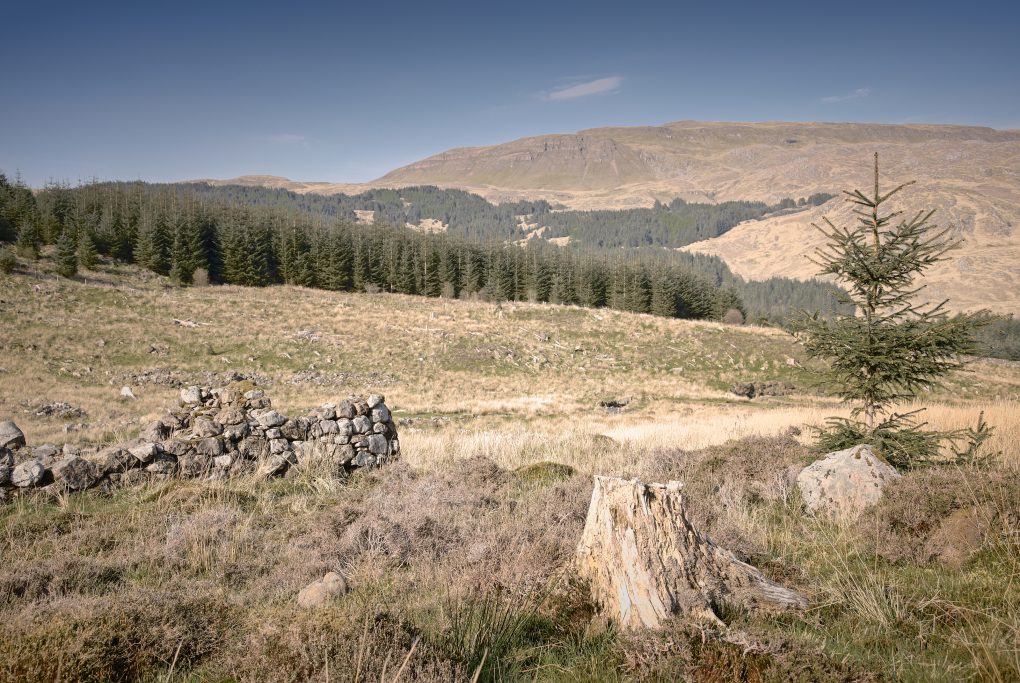As the weather dictated, a slight detour from the east coast away out to the centre and west of the top of Scotland. I explored the road down Strathnaver, starting with a small church at Syre (a distinctive tin-tab construction originally built by the Free Church of Scotland as a mission to nearby Sutherland estate, but now joined to the Church of Scotland since 1929):
Having been there last autumn, the view from the head of Loch Naver was just as compelling (and just as windy)
A few hundred yards north of Altnaharra a small road leads off through Strathmore, passing some beautiful landscape scenes of Ben Loyal across Loch Meadie:
Further along, I discovered a beautiful but thought-provoking view: at Allnabad, a former shepherd’s house, now ruined and roofless, looks out over a barren landscape over the length of Strath Coir an Easaidh to beautiful undulating mountains beyond. Unusually for me, I made quite significant changes to the scene – the real lighting was strongly blue-green (a very Fuji summer landscape colour palette) but it works better with hints of relative colour beneath a pale sepia wash for a classic old-time look. (I’ve also slightly moved the small pile of stones relative to the building.) The resultant photo is called “The Story”, partly as a homage to the Runrig song of the same name, partly because of the sense of time – evolution of the land on geological and sociological timescales.
Continuing north up Strathmore, I found the remains of the broch at Dun Dornaigil – conveniently built beside the road 😉 – on a lovely sunny day, just had to fly the drone up where a location a bit downstream made an excellent composition of river leading to the broch and Ben Hope in the distance.
From there we drove up to the far north coast and followed the A836 east, keeping an eye on the landscape to the south. Ben Loyal makes an unmistakable outline with its four peaks; somewhere nearer to Tongue there was a convenient layby giving a comparatively clear view across to the mountain.




